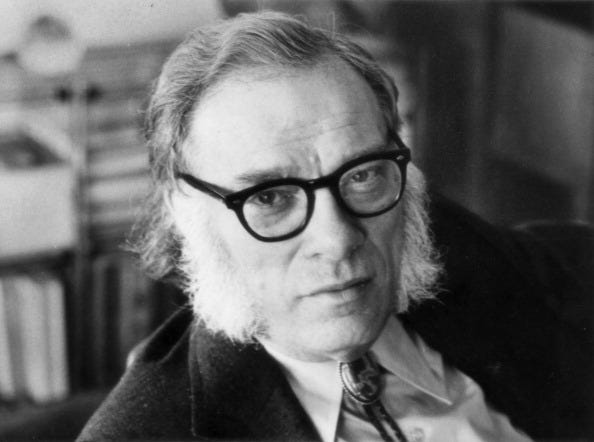“Ode to the Fish” by Ellen Bass from Like a Beggar. © Copper Canyon Press, 2014.
ORIGINAL TEXT AND AUDIO - 2017
On this date in 1995, the most distant galaxy discovered to date was first spotted from the Keck Observatory. The observatory perches atop Mauna Kea, a dormant volcano on the island of Hawaii, above the clouds at an altitude of almost 14,000 feet. Prior to Keck I, the Hale telescope near San Diego was the largest optical telescope, with an aperture of five meters. It had reigned supreme since 1949. The trouble was that the air quality in Southern California was just getting worse with every passing year. Hale was losing its usefulness at a time when the demand for telescopes far exceeded the supply. So, in the late 1970s, a group of scientists from the University of California formed a committee to plan the future of astronomy at the university. One physicist, Jerry Nelson, had little experience in astronomy, but he came up with the idea to build a telescope that was not just a little bit bigger than Hale, but a lot bigger — twice its size, in fact. Ground was broken in 1985, and the first telescope — Keck I — first saw light in 1992. It was, and still is, the world’s largest optical telescope, with a diameter of 10 meters.
Keck I’s innovations doubled the observation range of any existing telescope, and that’s what led to the discovery, in 1995, of a galaxy estimated to be 15 million light years from Earth. At that time, it was the farthest galaxy ever observed.
A second telescope, Keck II, began operating in 1996. Keck II is an exact replica of Keck I, and in 2005 the two telescopes were linked together, making them into basically one 20-meter telescope. Optical telescopes gather light to form a direct visual image of distant objects. The two telescopes, working together, can gather twice as much light, and therefore they allow astronomers to see twice as far into space. Keck II was the first telescope to use adaptive optics: technology that takes into account, and can adjust for, disturbances in the Earth’s atmosphere. Using Keck I and II, scientists were able to observe the first planet outside our solar system as it passed in front of its parent star; astronomers also determined that the Andromeda Galaxy is about three times the size that they previously thought.
It’s the birthday of Isaac Asimov (1920). He was born in Petrovichi, Russia, and his family immigrated to the United States when he was three years old. He grew up in Brooklyn, where his family ran a candy store. Most people think of him as a science fiction author, and he is considered one of the “Big Three” in that genre (along with Robert A. Heinlein and Arthur C. Clarke), but his books are found in all 10 categories of the Dewey Decimal System. He wrote or edited over 500 books, many of them works of popular science, making him one of the most prolific writers of all time.
It’s the birthday of American cartoonist Lynda Barry, born in Richland Center, Wisconsin (1956). Her comic strip Ernie Pook’s Comeek introduced the world to a bespectacled, freckly third-grader named Marlys Mullen who lives in a trailer park with her family. Marlys calls her world the “Land of Marlys; also known as ‘Butt Island’” and has a penchant for handing out tickets from a book of grievances she calls her “Galores of Violations.”
Barry grew up in Seattle. Her father was a meatcutter and her mother was a housekeeper in a hospital. Barry started working nights as a janitor when she was 16. There were no books in her house growing up, so she relied on bookmobiles and the school library. About her childhood, she says: “My parents were not book people. They worked, shouted, drank, slapped, belted, and were broke.” As a kid, Barry became enamored of a newspaper comic called “Dondi,” which featured a large-eyed Italian war orphan. Barry remembers having a Bic pen and trying to draw like Dr. Seuss.
At Evergreen State College, she had a bad breakup with a boyfriend and began drawing obsessively, mostly strange cartoons that featured men as cactuses. Barry says, “The cactuses were trying to convince the women to go to bed with them, and the women were constantly thinking it over but finally deciding it wouldn’t be a good idea.” She met Matt Groening, who liked her comics and started publishing them in the student newspaper. Barry was 23 when The Chicago Reader picked up her comic strip and started paying her $80.00 a week.
Lynda Barry’s collections of comics and books include Girls & Boys (1981), The Greatest of Marlys (2000/2016), and One! Hundred! Demons! (2002), which Barry calls an “autobiofictionalography.”
About the inspiration for the character of Marlys, Barry says, “She showed up faster than I could have thought her up.” Marlys has a sister, Maybonne, who smokes a brand of cigarettes called “Don’t!” and a brother named Freddie who grows mold in jars beneath his bed. Their homelife is tumultuous; Barry became used to people writing her irate letters about her use of child abuse and alcoholism in a cartoon, but Marlys became a hit and Barry even appeared on The David Letterman Show several times. After her book The Good Times Are Killing Me (1988) came out, she received a lot of attention from Hollywood, which she said made her feel like “a woman author with a pork chop on her head in a room full of dachshunds.”
In the beginning, Barry stuck with a four-panel structure for her comics, with deliberately misspelled words, doodles, stick figures, and scrawls that represented childhood. Over the years, her hand began to hurt, so she switched to a brush and ink, which culminated in the publication of her groundbreaking novel, Cruddy (1999), which features disturbing, luminous illustrations and examined issues of abuse and addiction.
When asked why she chose comics as an art form, Barry answered: “If it’s all just drawing, it’s too quiet; if it’s all just writing, it’s too lonely. So, it’s about the two coming together.”
On her unconventional style, Lynda Barry says: “People think if you’re writing a story that you have to follow story structure. It’s like thinking the only reason we have teeth is because there are dentists.”
Lynda Barry’s most recent book is Syllabus: Notes from an Accidental Professor (2014).
It’s the birthday of playwright Christopher Durang (1949), born in Montclair, New Jersey. He was raised Roman Catholic, went to a high school where he was taught by monks, and thought he might become a monk himself. Instead, he became a playwright, and when he was 28 years old, he had his first big success with the play Sister Mary Ignatius Explains It All for You (1979), which the New York Times described as “a satire about a demonic Catholic school nun.” He went on to write Beyond Therapy (1981), Baby with the Bathwater (1983), and most recently, Vanya and Sonia and Masha and Spike (2012).
Be well, do good work, and keep in touch.®
Boom Town: A Lake Wobegon Novel read by Garrison Keillor (10 CDs)






It is worthwhile noting that the Keck 1 and 2 telescopes were funded by W.M.Keck, founder of The Superior Oil Company. The Keck family have been generous to the communities they live and operate in.